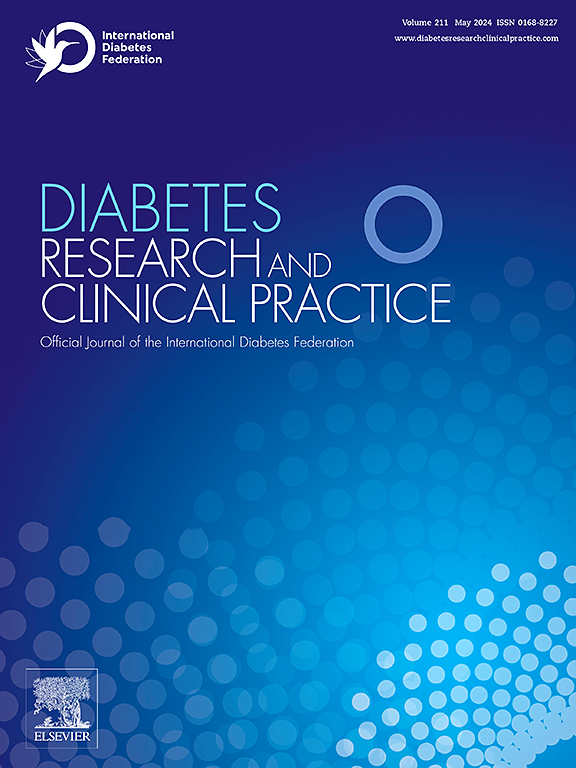Reproductive factors predict risks of cardiovascular disease and premature death in postmenopausal women with type 2 diabetes: The Fukuoka Diabetes Registry
IF 6.1
3区 医学
Q1 ENDOCRINOLOGY & METABOLISM
引用次数: 0
Abstract
Aims
Reproductive factors (reproductive period, age at menarche, and age at menopause) are associated with a risk of cardiovascular disease (CVD) and death in individuals without focusing on comorbid diabetes. However, it remains unclear whether this association also applies to individuals with diabetes. This study investigated the relationship between reproductive factors and the risk of CVD and death in postmenopausal Japanese women with type 2 diabetes.
Methods
1,592 postmenopausal women with type 2 diabetes without pre-existing CVD were subclassified based on reproductive period (age at menopause minus age at menarche). The primary outcome was a composite of CVD incidence and all-cause death.
Results
The risk of the outcome decreased with a longer reproductive period. Compared with a reproductive period of ≤ 29 years, the multivariable-adjusted hazard ratios (95 % CI) were 0.80 (0.39–1.66), 0.73 (0.37–1.43), and 0.43 (0.19–0.99) for reproductive periods of 30–34, 35–39, and ≥ 40 years, respectively (p for trend = 0.046). Earlier age at menarche and later age at menopause were also associated with a decreased risk of the outcome.
Conclusions
Evaluating reproductive factors may help predict the risks of CVD and death in postmenopausal women with type 2 diabetes.
生殖因素可预测绝经后 2 型糖尿病妇女罹患心血管疾病和过早死亡的风险:福冈糖尿病登记
目的:生殖因素(生育期、月经初潮年龄和绝经年龄)与心血管疾病(CVD)和死亡风险有关,但与合并糖尿病无关。然而,这种关联是否也适用于糖尿病患者,目前仍不清楚。本研究调查了绝经后患有 2 型糖尿病的日本妇女的生殖因素与心血管疾病和死亡风险之间的关系。方法:根据生殖期(绝经年龄减去月经初潮年龄)对 1,592 名绝经后患有 2 型糖尿病且未合并心血管疾病的妇女进行了亚分类。主要结果是心血管疾病发病率和全因死亡的复合结果:结果:生育期越长,结果风险越低。与生育期≤29年相比,生育期为30-34年、35-39年和≥40年的多变量调整危险比(95 % CI)分别为0.80(0.39-1.66)、0.73(0.37-1.43)和0.43(0.19-0.99)(趋势比=0.046)。月经初潮年龄较早和绝经年龄较晚也与结果风险降低有关:结论:评估生殖因素有助于预测绝经后2型糖尿病女性患者的心血管疾病和死亡风险。
本文章由计算机程序翻译,如有差异,请以英文原文为准。
求助全文
约1分钟内获得全文
求助全文
来源期刊

Diabetes research and clinical practice
医学-内分泌学与代谢
CiteScore
10.30
自引率
3.90%
发文量
862
审稿时长
32 days
期刊介绍:
Diabetes Research and Clinical Practice is an international journal for health-care providers and clinically oriented researchers that publishes high-quality original research articles and expert reviews in diabetes and related areas. The role of the journal is to provide a venue for dissemination of knowledge and discussion of topics related to diabetes clinical research and patient care. Topics of focus include translational science, genetics, immunology, nutrition, psychosocial research, epidemiology, prevention, socio-economic research, complications, new treatments, technologies and therapy.
 求助内容:
求助内容: 应助结果提醒方式:
应助结果提醒方式:


